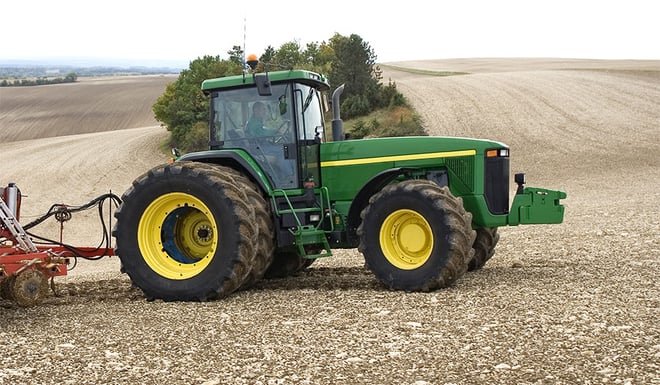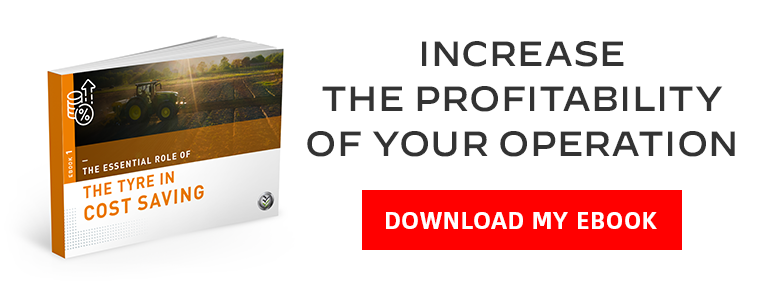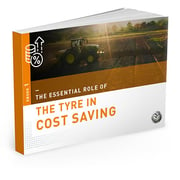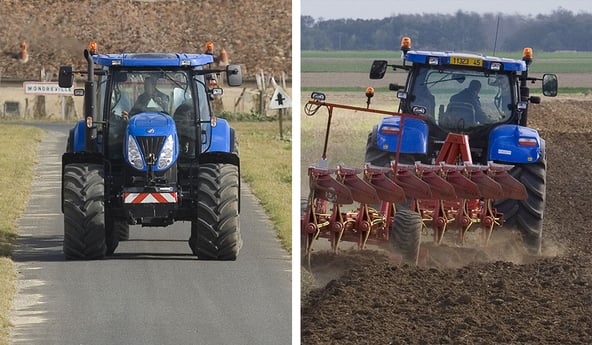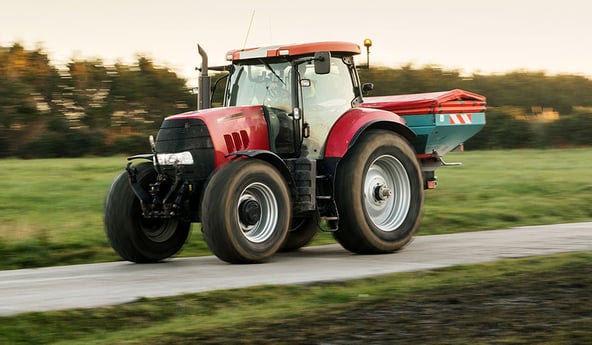Your agricultural tyre budget is not accurate if you only consider the purchase price. A more expensive tyre, which can last twice as long, will actually end up less costly in the long run. It therefore makes more sense to calculate the hourly cost and take into consideration the factors that may have a negative impact on this cost. When adopting this global approach, you must take into account the design quality of the tyre as well as its use.
To begin with, you will need to break in the new tyres by driving on soft ground that is less aggressive than the usual land, to allow the rubber to stabilise properly during the first 150 hours of use. Then, to extend the useful life, you will have to look at the principal factors that have an impact on the tyres’ lifespan, the details of which you will find below:
1. The type of ground has an impact on the hourly cost of an agricultural tyre
To determine which agricultural tyres are best suited to your farm, you must take account of the composition of your soil as well as the terrain profile and include them in your decision-making strategy when the time comes to renew your tyres. The topography and the different characteristics of the soil have a significant impact on how rapidly your agricultural tyres wear as well as their efficiency.
a) Impact of calcareous soil
Calcareous soil has a variable granulometry and can contain varying quantities of larger limestone particles. These bits of limestone will alter your agricultural tyres prematurely.
This abrasive stone can lead to excessive wear to the rubber and reduce your tyres’ wear life. Take this into consideration when making your purchase and opt for a more resistant rubber than used in standard tyres.

b) Impact of silex or stony soils
Silex or stony soils present a high risk of rapid wear to agricultural tyres. Certain stones may be as sharp as glass, causing cuts, scratches or tearing off small particles or rubber from the tyre’s lugs, even on the most solid tyres.
Tyres that are reinforced at the level of the tread will be necessary, preferably with more rubber than average standard tyres.
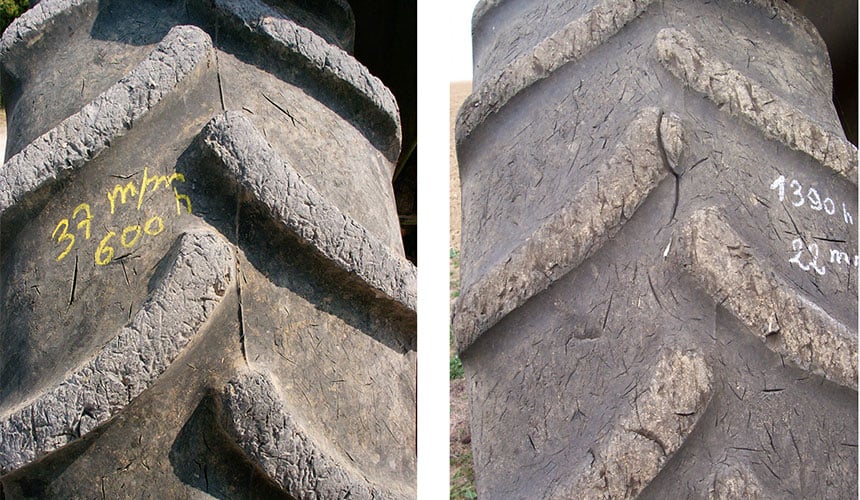
c) The specific case of wine growing land
Wine growing land is often rich in schist, or granite rock debris, and is harder and drier due to the nature of the vine which develops well with this type of soil. Vines tend to be grown on steeper hilly slopes than most other crops.
All these factors can accelerate agricultural tyre wear. It is therefore necessary to choose vineyard tyres which have been specially designed for this type of land.
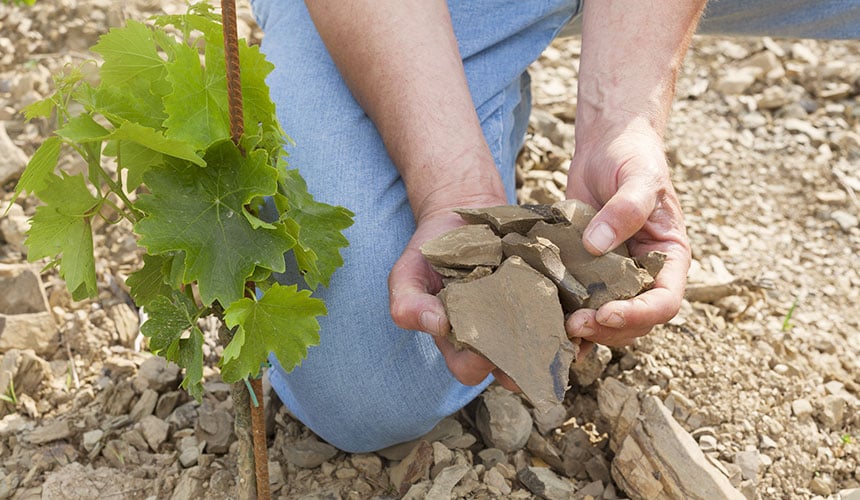
2. Impact of the structure of your farm and your activities on the tyres
Agricultural tasks are not easy on your tyres, whose wear life depends essentially on the environment in which they work.
Here is how different types of activities can influence the hourly cost of your tyres.
a) Frequent transport or long periods on the road
When you cover long distances on the road, your agricultural tyres will wear more rapidly. The asphalt is abrasive and acts like sandpaper on the rubber.
To avoid premature wear, you should increase the inflation pressure in your tyres during road transport at speed or when carrying a heavy load.
b) Soil preparation work
This work requires a high amount of torque and puts considerable strain on the tyres. For example, during soil aeration work, the tyres must pull an implement that digs deep into the soil. There is a lot of torsion at the level of the lugs and sidewalls, with high rolling resistance which tends to increase wear. In these circumstances you must identify the front/rear load to determine the most suitable inflation pressure to obtain the best possible motricity and limit wear.
c) Work in the court farmyard
Manoeuvres in the court farmyard on hard ground can damage your agricultural tyres rapidly. Obstacles such as abutments or doorways can break the casing or the lugs, whereas frequent manoeuvres, twisting and turning on the spot for loading and unloading operations, cause damage to the rubber and very rapid wear.
d) Use for civil engineering operations
When you use your tractor for civil engineering or landscaping work on hard ground or in the presence of obstacles such as stones and debris, fit your tractor with suitable tyres. Standard agricultural tyres are not designed for this type of use, which may damage the tread and the internal casing when you drive on rubble.
e) Specific uses
The use of standard agricultural tyres is not recommended for specific uses. For example, forestry work is particularly harsh on tyres because the ground is often covered in obstacles (plant waste, sharp stones, debris, etc. ). It is better to equip yourself with tyres dedicated to this type of activity.
3. An unsuitable load may impact your hourly cost
An inappropriate load may shorten the life of your tyres. Understanding the risks linked to overloading is essential to optimise tyre efficiency and reduce the frequency at which you have to replace them.
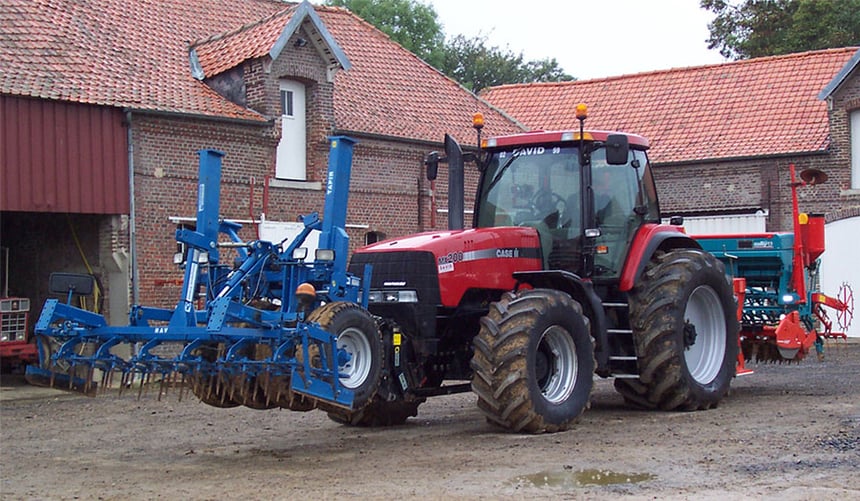
Do not exceed the recommended load
Your load plays a decisive role in the preservation of your agricultural tyres. Complying with the maximum load recommended by the tyre manufacturer allows you to extend the wear life of your tyres and maximise their efficiency.
In practical terms, too much load increases rolling resistance. The overloaded tyre will tend to sink further into the ground, causing excessive slip and reducing its self-cleaning capacity. The tractor and implement will lose traction power, so you accelerate to make up for this, resulting in more rapid wear to the tyres, without mentioning the damage caused to the structure of the soil.
Balance out and distribute the load correctly
It is important to balance out the load correctly between the front axle and the rear axle of your tractor. An incorrect load distribution can impact handling ability and lead to too much slip in the rear tyres, in particular in wet conditions.
For a 4-wheel drive tractor, the ideal weight distribution is 35% to 40% on the front axle and 60% to 65% on the rear axle. To achieve this, you have the possibility of adding metal weights to the tractor’s front lifting system.
Ballasting allows you to make use of the tractive force of all four tyres simultaneously, thus reducing wear to each tyre and optimising the overall capacity of your combination vehicle.
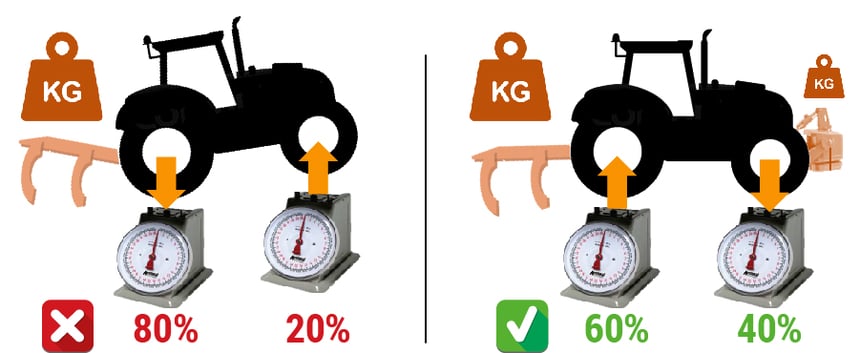
4. Incorrect pressure settings
Agricultural tyre settings are an aspect that is often neglected, yet crucial if you wish to extend the wear life of your tyres significantly.
a) What are the risks with overinflated tyres?
Increasing tyre pressure is recommended if you need to compensate for a heavy load. This doesn’t really cause any problem for transport by road, but when working in the fields, overinflating your tyres will be counterproductive. Too much pressure will lead to more slip, reduce your agricultural machine’s work capacity and accelerate tyre wear.
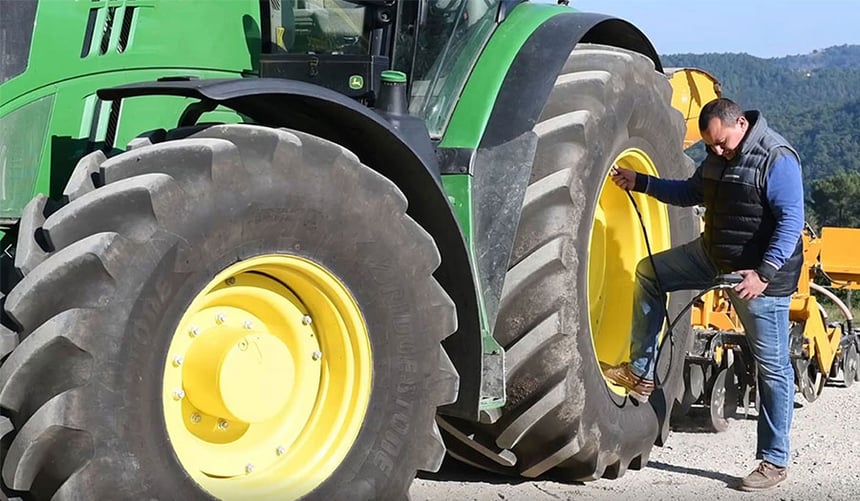
b) What are the consequences of underinflated tyres?
Although ‘low‘’ pressure is recommended to limit soil compaction during work in the fields, it can lead to problems during transport by road.
Underinflated tyres wear more rapidly on the asphalt due to extensive friction. At high speed, the temperature of the tyres rises, making the rubber more supple and accelerating wear even further.
If you leave the field with underinflated tyres and a heavy implement or loaded trailer, this could cause rapid wear and potential damage to the casing, in addition to the risk of losing control of the tractor, which is even higher when cornering.
c) Average pressure: is it a good idea?
Maintaining average pressure permanently in agricultural tyres is not a good solution, because the conditions vary radically in terms of load, but also from road to fields with completely different ground.
Average pressure leads to excessive wear on the road due to high rolling resistance and excessive slip in the fields, reducing the wear life of your tyres in both cases.
5. Excess speed impacts your hourly cost
Apart from the higher fuel consumption, excess speed can have a considerable impact on the lifespan of your agricultural tyres.
a) Always comply with the speed rating indicated on the tyres
The speed rating is an essential factor to take into account if you wish to prolong the lifespan of your agricultural tyres.
This is indicated on the tyre’s sidewall and determines the maximum speed at which you can drive safely with a given load. It is the result of calculations and tests carried out by the manufacturer, which take account of all the different types of strain that the tyres may be placed under.
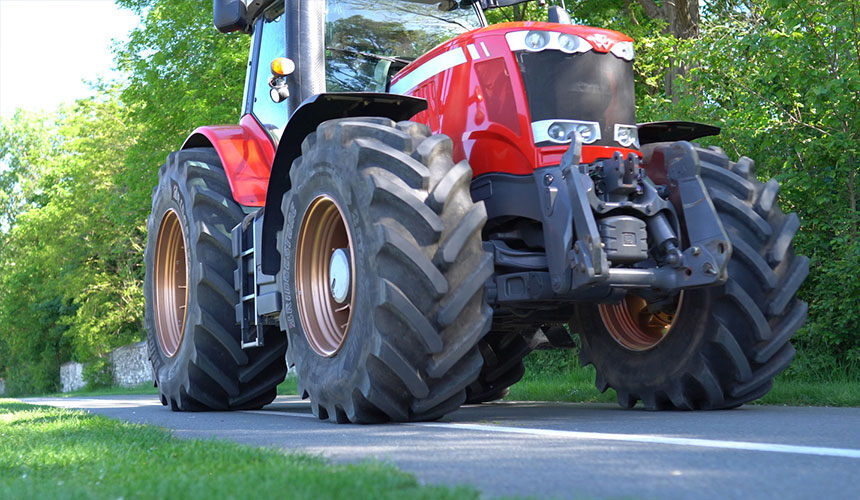
b) What happens if you don’t comply with the speed rating?
If you exceed the speed recommended by the manufacturer, you run the risk of seriously damaging your tyres.
Driving at speed on the road with a heavy load causes excessive heating of the casing as well as the rubber, making the tyre more prone to damages. Too much speed also raises the risk of accidents when braking, especially if you are carrying a load.
Your tyres will not be able to cope with the load transfer from your trailer in the event of emergency braking.
6. The VX TRACTOR tyre, with a very low hourly cost
The VX-TRACTOR tyre is a wise choice for those looking for an agricultural tyre with an extremely low hourly cost. It was designed by Bridgestone with the objective of achieving maximum durability.
Up to 20% more rubber
When you invest in agricultural tyres, the longevity of the equipment is crucial for your calculation of the hourly cost.
The VX-TRACTOR tyre excels in this domain thanks to its unique design, offering up to 20% more rubber than a standard tyre.
In other words, more rubber means less rapid wear to the tyre, which results in a lower hourly cost.
The rubber compound has also been improved, by the addition of plant-based oil, which increases its resistance to wear. So in addition to increasing the volume of the lugs, the rubber is more resistant to wear, which means that you have to replace your equipment less frequently.
With the VX-TRACTOR tyre you save on replacement costs and maximise the lifespan of your tyres, which leads to a very low hourly cost.
An intelligent investment
The VX-TRACTOR tyre represents an intelligent investment for all farmers looking to reduce operating costs and maintain the efficiency of their equipment at an optimal level. The areas of improvement are numerous and complementary. The increase in the quantity of rubber at the level of the lugs contributes to improving your traction capacity in the fields while ensuring a longer wear life for the tyre.
Thanks to its unique design, this tyre has better overall efficiency. These combined aspects make it an option that should not be overlooked if you wish to maximise your profitability.
CONCLUSION
The hourly cost of your agricultural tyres is directly linked to two major factors: the manufacturing quality of the tyre and its use. The best way to reduce the hourly cost is therefore is to take account of these two factors, in order to try and double the lifespan of your tyres and be sure to make real savings in the long run.
To learn more about ways to increase your farm’s productivity, bridgestone-agriculture has created a comprehensive eBook on the topic which is available for you to download for free:
Bridgestone-agriculture Blog is written and administered by tractor tyre experts who are available to provide you with advice on agricultural tyres. They will help you to maximise your productivity with information on all things relating to tyres: inexpensive tractor tyres, technical data for agricultural tyres, solutions for avoiding soil compaction, sprayer tyre pressure, why and how to ballast your tractor tyres, when to use dual-wheels, the mechanical causes for abnormal wear, discounted agricultural tyres, etc.
Most people who read this article have also read some of the following articles:
- 10 tips to reduce abnormal wear to your farming tyres
- Repairing tractor tyres: the techniques for each situation
- When can you carry out cold repairs on tractor tyres?
- 5 problems on the bead of an agricultural tyre which mean it has to be replaced
- Does unsuitable inflation pressure accelerate wear to my agricultural tyres?
- What are the 4 top stress factors for your agricultural tyres?
- What impact does stubble have on my tractor tyre wear?
- Why don’t my agricultural tyres last long enough?
- Which agricultural tyre model has the most competitive hourly cost?
- Which agricultural tyre is most suitable for road transport?
This information is intended only to make you aware of the technical and functional aspects of agricultural tires and their use. It does not allow you to make a judgment or a definitive conclusion on a given problem. Only your agricultural tire expert is able to make a technical assessment and take a final decision, case by case.
Leave a
commentary
Your email address will not be published.
Required fields are indicated with *


